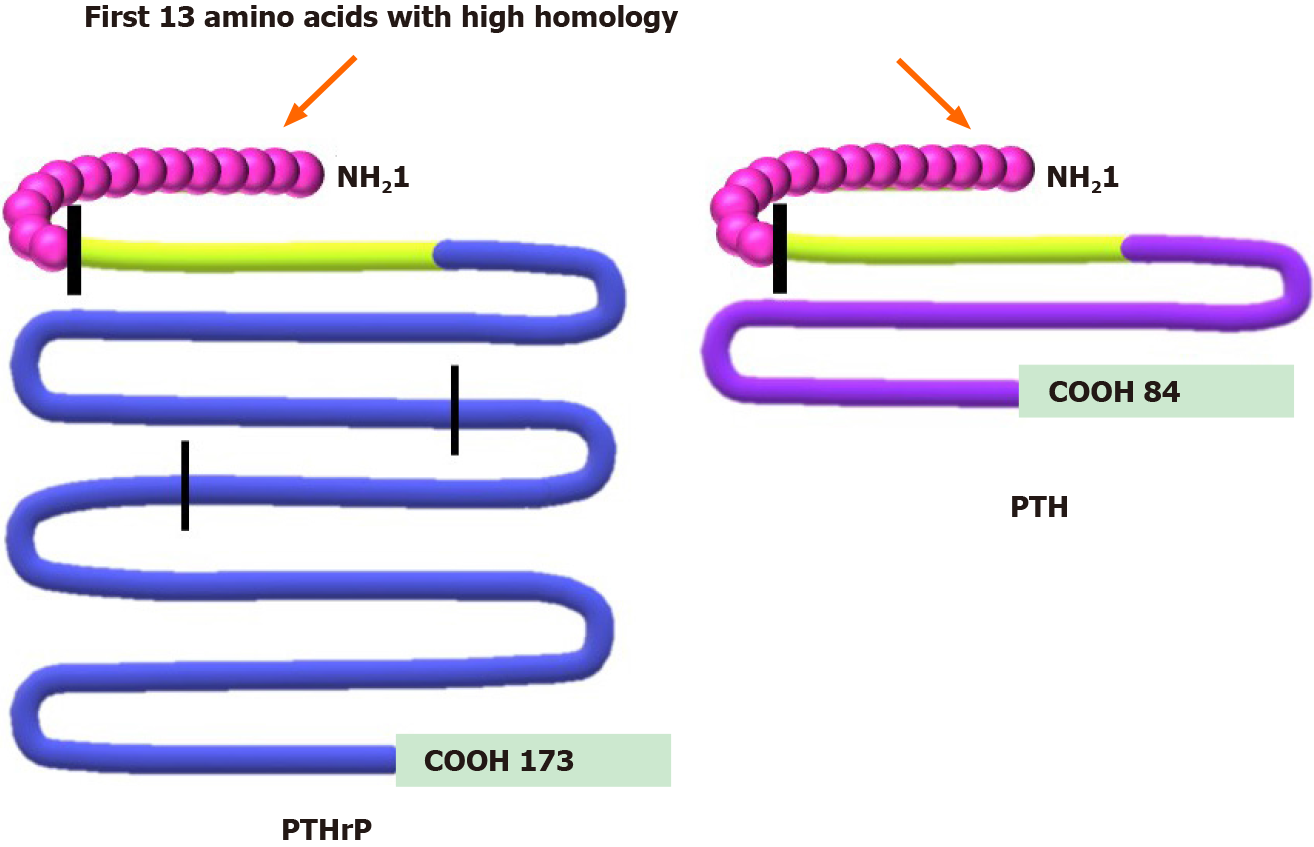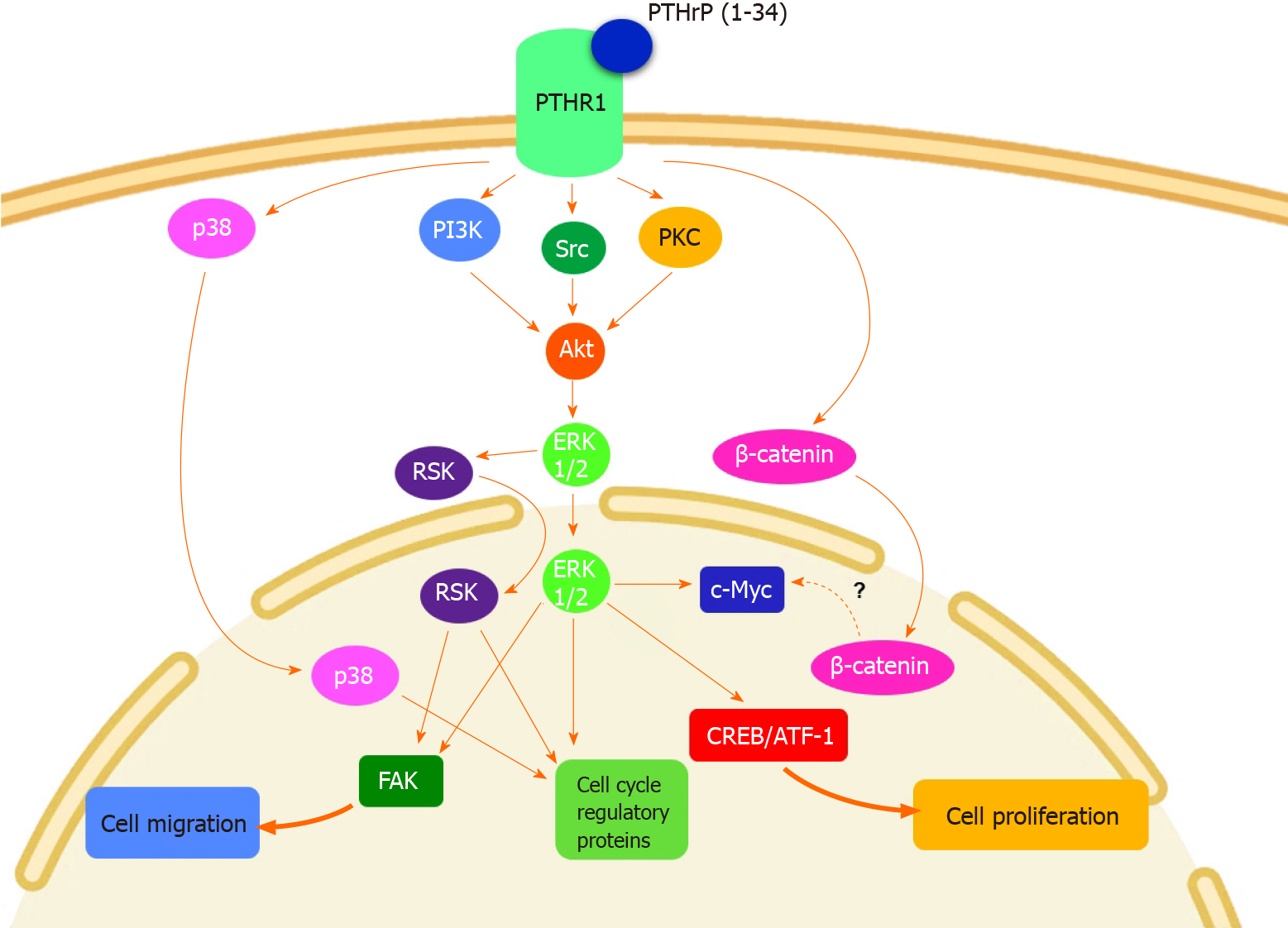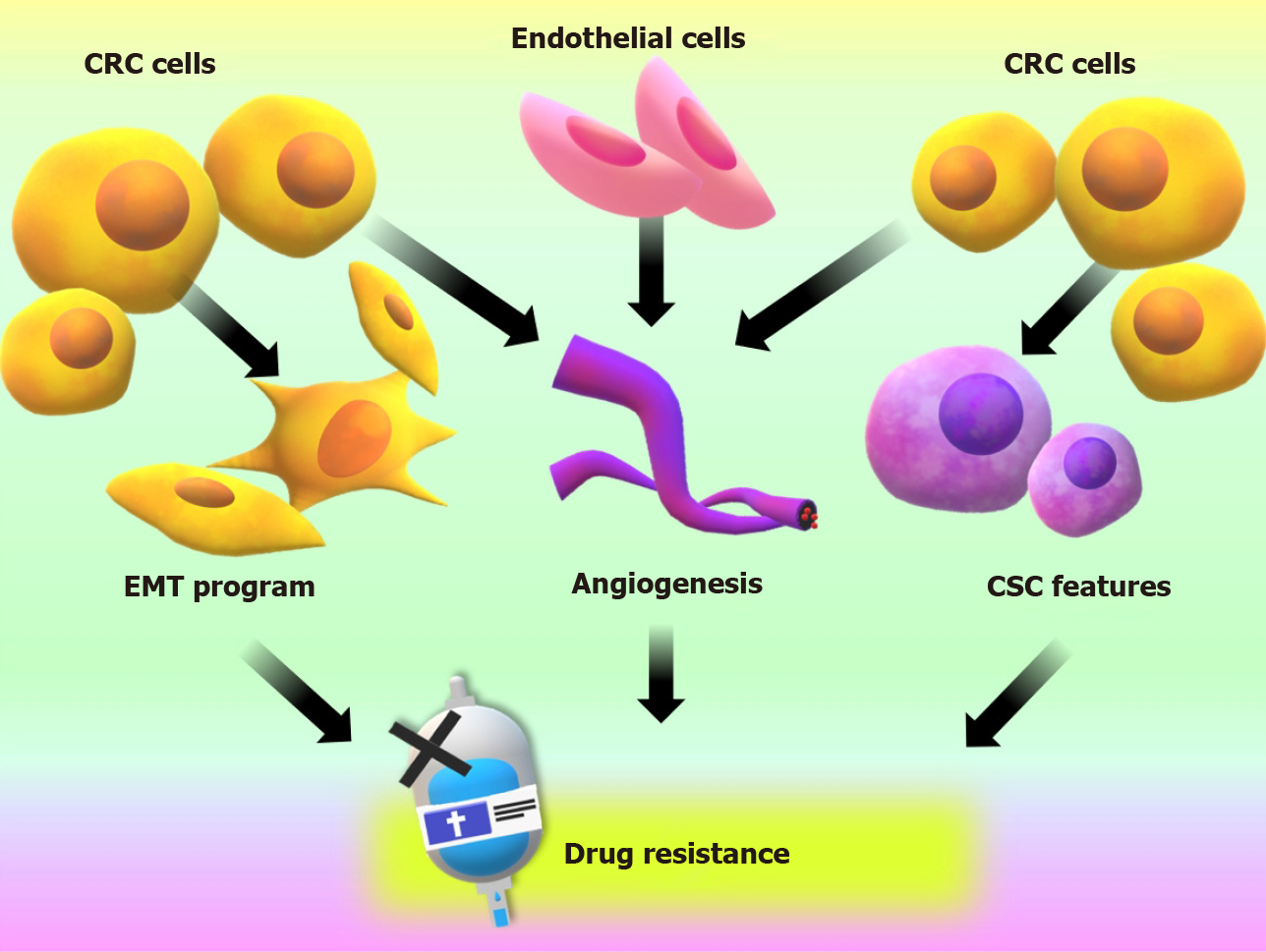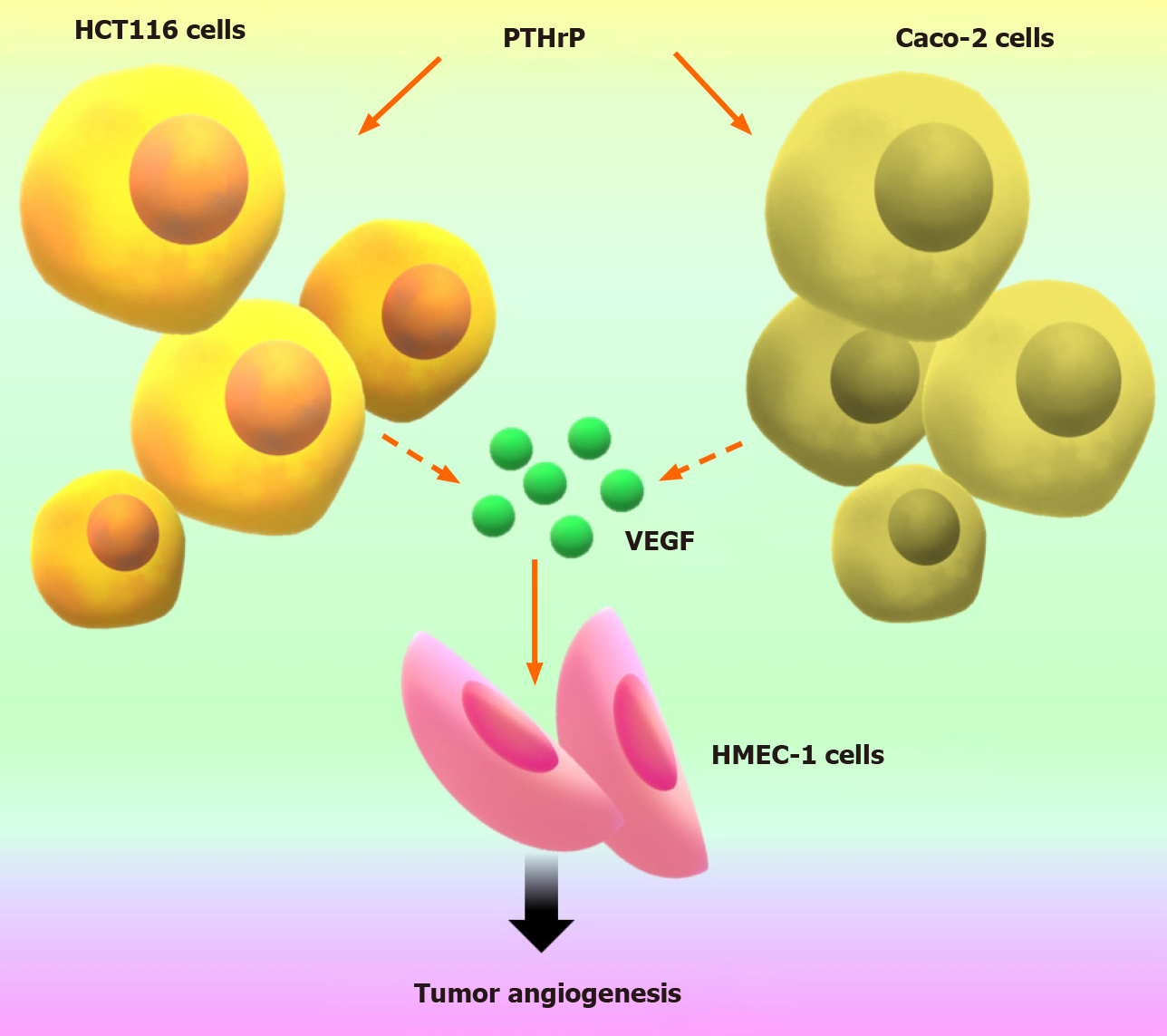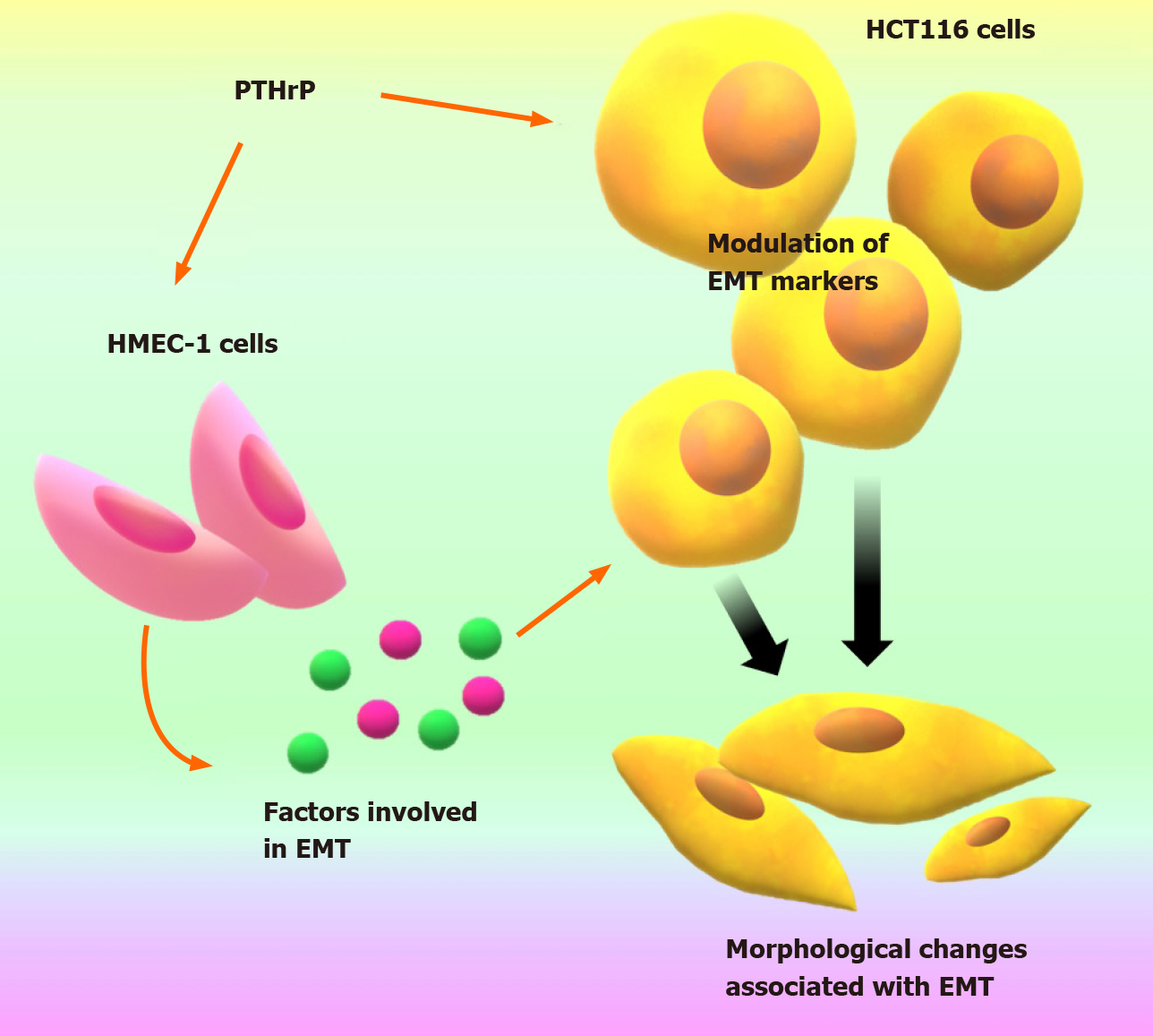Copyright
©The Author(s) 2021.
World J Gastroenterol. Nov 7, 2021; 27(41): 7025-7040
Published online Nov 7, 2021. doi: 10.3748/wjg.v27.i41.7025
Published online Nov 7, 2021. doi: 10.3748/wjg.v27.i41.7025
Figure 1 Comparison between protein structure of parathyroid hormone-related peptide and parathyroid hormone.
Parathyroid hormone-related peptide (PTHrP) peptide (left side) undergoes a complex post-translational process, obtaining several secreted forms. The N-terminal region 1-34 (green) shows high homology with parathyroid hormone (PTH) and shares more than 60% of the first 13 amino acids (first vertical line). This region allows PTHrP to interact with the type 1 PTH receptor. The PTHrP 36-86, region between N-terminal domain and the second vertical line, is related to placental calcium transport. The 87-107 domain contains a nuclear localization signal (domain between the second and third vertical lines), and the remaining COOH region corresponds to the osteostatin domain[20,24,25]. This figure is original for this work and is based on data published in Soki et al[20], Wysolmerski JJ[24] and Goltzman D[25].
Figure 2 Molecular mechanisms involved in parathyroid hormone-related peptide effects on colorectal cancer cells.
Parathyroid hormone-related peptide (PTHrP) induces cell cycle progression and proliferation of colorectal cancer (CRC) cells through non-receptor tyrosine kinase Src (Src), extracellular signal-regulated kinase (ERK) 1/2 and p38, both members of the mitogen activated protein kinases family (MAPK), PI3K/protein kinase B (Akt), p90 ribosomal S6 kinase (RSK) and β-catenin pathways. This cytokine also promotes CRC cell migration and focal adhesion kinase (FAK) protein expression through ERK/RSK signaling pathway[37-40]. This figure is original for this work and shows the results published in Calvo et al[37], Martín et al[38], Martín et al[39], and Calvo et al[40]. ATF-1: Activating transcription factor 1; CREB: cAMP response element binding protein; PI3K: Phosphoinositide 3-kinase;PKC: Protein kinase C; PTHR1: Parathyroid hormone receptor 1.
Figure 3 Events that promote an aggressive phenotype on colorectal cancer cells and are related to chemotherapeutic drug resistance and treatment failure.
CRC: Colorectal cancer; CSC: Cancer stem cell; EMT: Epithelial to mesenchymal transition.
Figure 4 Parathyroid hormone-related peptide induces tumor-associated angiogenesis through the pro-angiogenic factor vascular endothelial growth factor released from colorectal cancer cells.
This figure is original for this work and shows results published in Calvo et al[44]. PTHrP: Parathyroid hormone-related peptide; VEGF: Vascular endothelial growth factor.
Figure 5 Parathyroid hormone-related peptide establishes a communication between colorectal cancer cells and endothelial HMEC cells through molecular factors modulating markers expression and morphological changes associated with cellular programs that promote the invasive phenotype in HCT116 cells.
This figure is original for this work and shows results published in Carriere et al[45]. EMT: Epithelial to mesenchymal transition; PTHrP: Parathyroid hormone-related peptide.
- Citation: Novoa Díaz MB, Carriere PM, Martín MJ, Calvo N, Gentili C. Involvement of parathyroid hormone-related peptide in the aggressive phenotype of colorectal cancer cells. World J Gastroenterol 2021; 27(41): 7025-7040
- URL: https://www.wjgnet.com/1007-9327/full/v27/i41/7025.htm
- DOI: https://dx.doi.org/10.3748/wjg.v27.i41.7025









